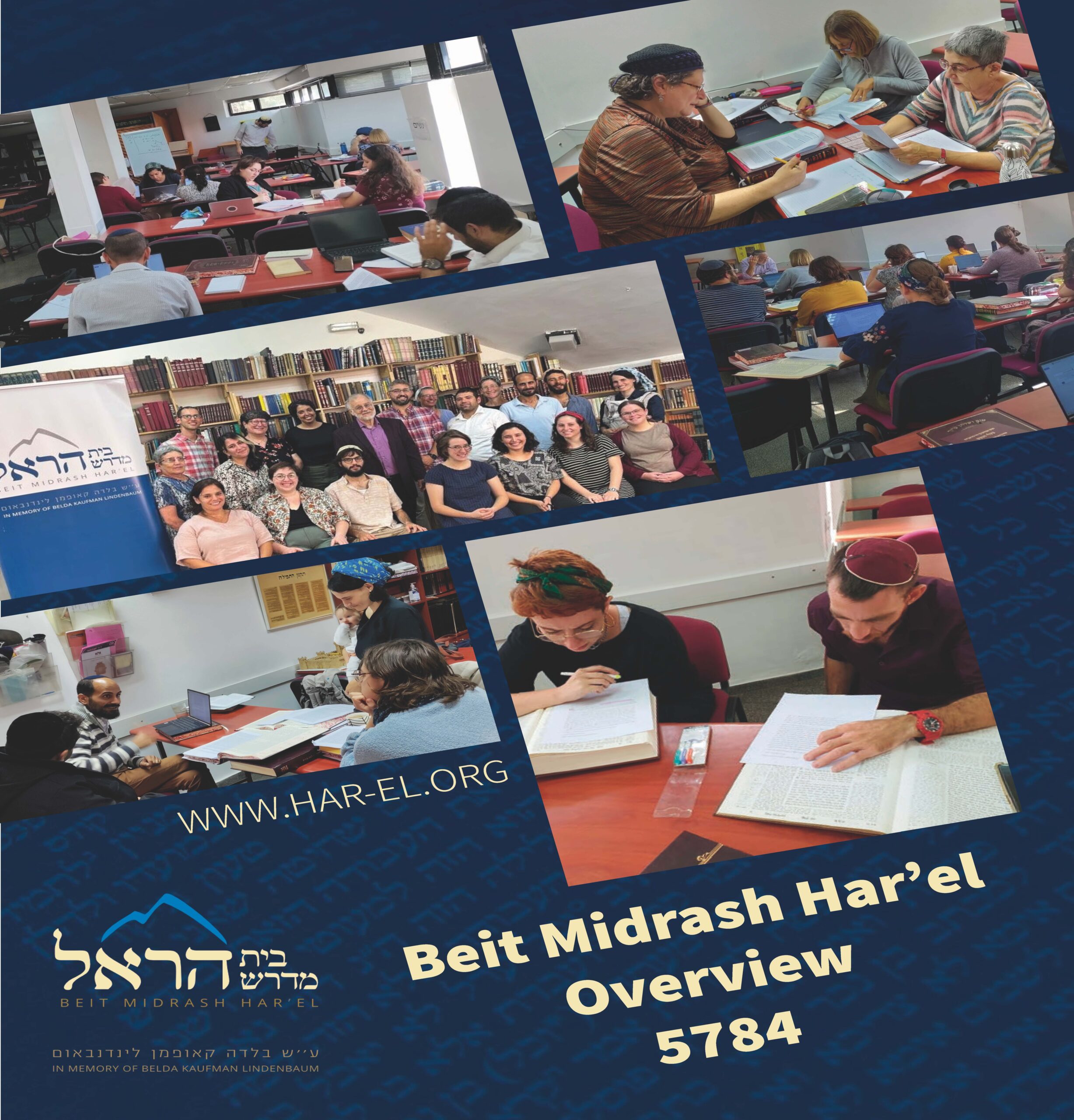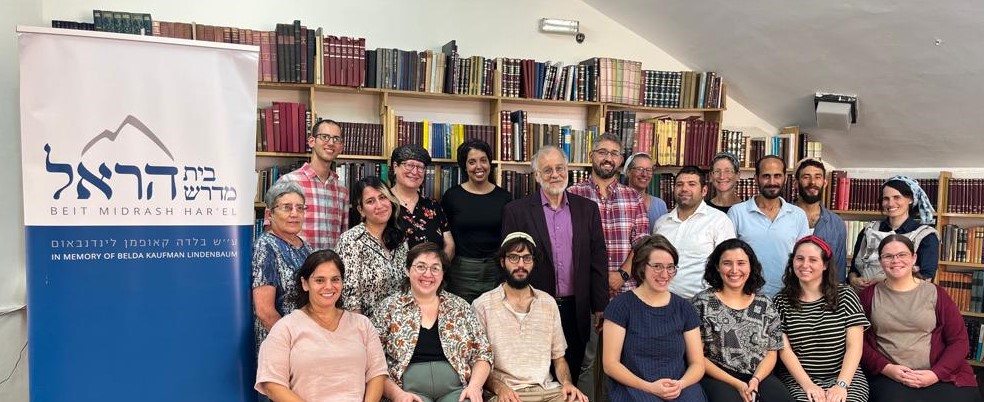By Rabbi Shayna Abramson
Often, when two people are disagreeing over matters of Torah, they will agree to disagree, concluding their arguments with adages such as, “Eilu v Eilu Divrei Elokim Chayim -These and those are both the words of the living God” -or “Sheviim Panim LaTorah -There are seventy faces to the Torah”.
But what does it mean to have a Torah with seventy faces, where completely contradictory opinions can both be the word of God?
I think that to explore this question, we need to go back to the experience of Divine Revelation itself.
According to the Midrash Tanhuma, God appeared to the Jewish people at Mount Sinai with many (metaphoric) faces:
“God showed the Israelites four different faces: the face of wrath, which goes with the written Torah text, the face of moderation, which goes with the Mishnah, the face of pleasantness, which goes with Talmud, and the face of playfulness, which goes with Agaddah. After showing all these faces, God said, ‘Despite the fact that you see me as having different faces, I am the one Lord, your God”.”
Here, God appears with different faces, each suited to a different type of Torah: The face of wrath is associated with written Torah, because once words are written down, there is a commitment to rules and a lack of flexibility that to the human being can feel very harsh. The Mishnah, the Oral Law, given as an accompaniment to the written Torah, is meant to moderate the written law, by taking human needs into account. As we move away from direct Divine Revelation at Sinai, where exact words are proscribed and there is little room for human embellishment, we move closer to the human realm, where interpersonal emotions and individual circumstances play a primary role, allowing for a Talmudic halacha that is meant to be pleasant for its adherents, and a downright playfulness in the Agadah, which, freed from the prescriptive weight of halachic norms, can be as innovative or shocking as it wishes to be. Each of these types of Torah: the strict letter of the law, the moderating forces, the legal loopholes and juristic principles that see halacha as advancing human welfare, and the spiritual sayings and stories meant to advance a connection to God beyond the halachic realm, bear the Divine imprint and are ultimately rooted in the Sinai Revelation.
The midrash here is presenting different types of Torah content, rather than conflicting opinions – and the different faces and sources presented do not inherently contradict each other. Nevertheless, the midrash is showing us an important principle: The Sinai Revelation was rooted in diversity and difference. This one moment in history must reveal a Torah that can stand for all Jews and all people and all times – in order to do so, it must contain multitudes, because no one approach will be correct for all circumstances. So God, in His infinite wisdom, reveals different types of Torah, which will then be embodied in different oral and textual sources that form an ongoing link of revelation and tradition that unfolds over time.
The midrash continues with this theme of diversity as a founding principle of the Sinai Revelation:
“Rav Levi said: God appeared to them like the icon that has faces from everywhere; a thousand people look at it, and it looks at everyone. Like this, when God was speaking, each person of Israel would say: ’Those words were spoken to me.’”
Here, the Sinai Revelation can be said to have a Mona Lisa effect: It doesn’t matter where in the room you are standing, you feel that the eyes – or in this case, the voice – is addressing you.
When we combine these midrashim, we see different faces of God corresponding to different parts of Torah, and God speaking in a way that makes each person feel like they were addressed personally. These add up to paint a picture of many different types of Torah being presented in many different ways.
This means that the receiving of the Torah, which we often think of as a highly unifying event, was in some ways, a very individual experience, rooted in commitment to diversity. This also means that from the beginning, different people had very different experiences of Torah, experiences that might sometimes contradict each other. We often speak of human beings created in the image of God and how this means that each human being has inherent value. But the truth is that we also create God in our own image: How we perceive God and the type of Torah we absorb is often a reflection of how we see ourselves and those around us. Even if God said the exact same thing and appeared with the exact same “face” – the voice, words and face would sound and look different to different people, because our ability to perceive is shaped by our own cognitive and emotional boundaries, which are rooted in our individual lives and experiences. This means that, on some level, a uniform experience – and a uniform Torah – would be impossible. It would also be undesirable, because in order for Torah to be for everyone, it must take into account different people’s interests, abilities, and life circumstances.
I believe that this midrashic portrayal of Sinai teaches us a moral-theological lesson:
According to philosopher Emmanuel Levinas, it is through seeing the ethical call embodied in the face of the Other, which speaks only to me, that I am constituted as a subject. The Jews were slaves in Egypt for hundreds of years, where they were treated as objects. This led to an internal objectification process, where the Jews saw themselves as helpless objects instead of as free human beings with agency. Part of their freedom process had to involve the internal freedom that begins when one perceives oneself as a subject, and not an object. For this process to take place, the Jewish people had to be faced with an Other giving them a moral word that was addressed only to them and placed complete responsibility upon them. This was the experience of receiving the Torah at Sinai. Each person saw a face of the Divine Other saying words, with a religious-ethical imperative addressed solely to them. The miracle of Sinai is that the Jewish people were able to experience this transformational freedom, and this is why it is precisely through accepting the Torah, and expressing agency in committing themselves to absolute responsibility, that the Jews begin to constitute themselves as subjects who are free.
God is inherently Other to the human. There is no way that we can understand him. Even Moshe, the greatest of prophets, who speaks to God “mouth to mouth” and is called the most loyal servant in God’s house (i.e. the world), can only see God’s back and not His face. And even the fact that we use these words, back and face, to describe God, a non-corporeal being, shows how we cannot comprehend the Divine, but rather, must use human words to describe Him, because as humans, we cannot understand that which is beyond human. This is why one of God’s miracles and acts of mercy in giving us the Torah was translating Divine language into human language, “the Torah spoke in the language of humans”, to help us to understand Him.
Because God is Other to us as human beings, every time we work to understand the Other, we flex the emotional muscles that lie at the foundation of our relationship with God. Because of this, God chose to give us the Torah not as a universal experience, but rather, as a multitude of experiences. God wanted the Sinai experience to reflect the value of understanding the Other that is foundational to the human-Divine relationship. Therefore, He chose to give us the Torah in a way that would force us to practice understanding the Other human being in order to help us understand Him. Since each person holds a unique piece of the Divine revelation, we must work hard to understand each person in order to understand God – and in doing the emotional work of cultivating that understanding, we prepare ourselves for the emotional work of understanding God-as-Other.
Because each of us only has one type of Torah and one type of revelatory experience, it is only by understanding the other types of Torah and experiences that we can move towards understanding the whole Torah.
This brings us back to the present day, and the two people arguing at the beginning of the article. When they agree to disagree, concluding their arguments with adages such as, “Eilu v Eilu Divrei Elokim Chayim -These and those are both the words of the living God” -or “Sheviim Panim LaTorah -there are seventy faces to the Torah”, they are in fact understanding the inherent Otherness that lies at the root of the Sinai experience, and is foundational to our relationship with God and with His creations.
Rabbi Shayna Abramson Kovler (Semikha 2022) holds a B.A. in History with a minor in Jewish Studies from Johns Hopkins University, an M.A. in Political Science from Hebrew University and a master’s degree in Jewish education from the Hebrew University. She is currently a PHD student in Gender Studies at Bar-Ilan University.
(Illustration from the Philip Medhurst Collection of Philip De Vere / Wikimedia Commons)


